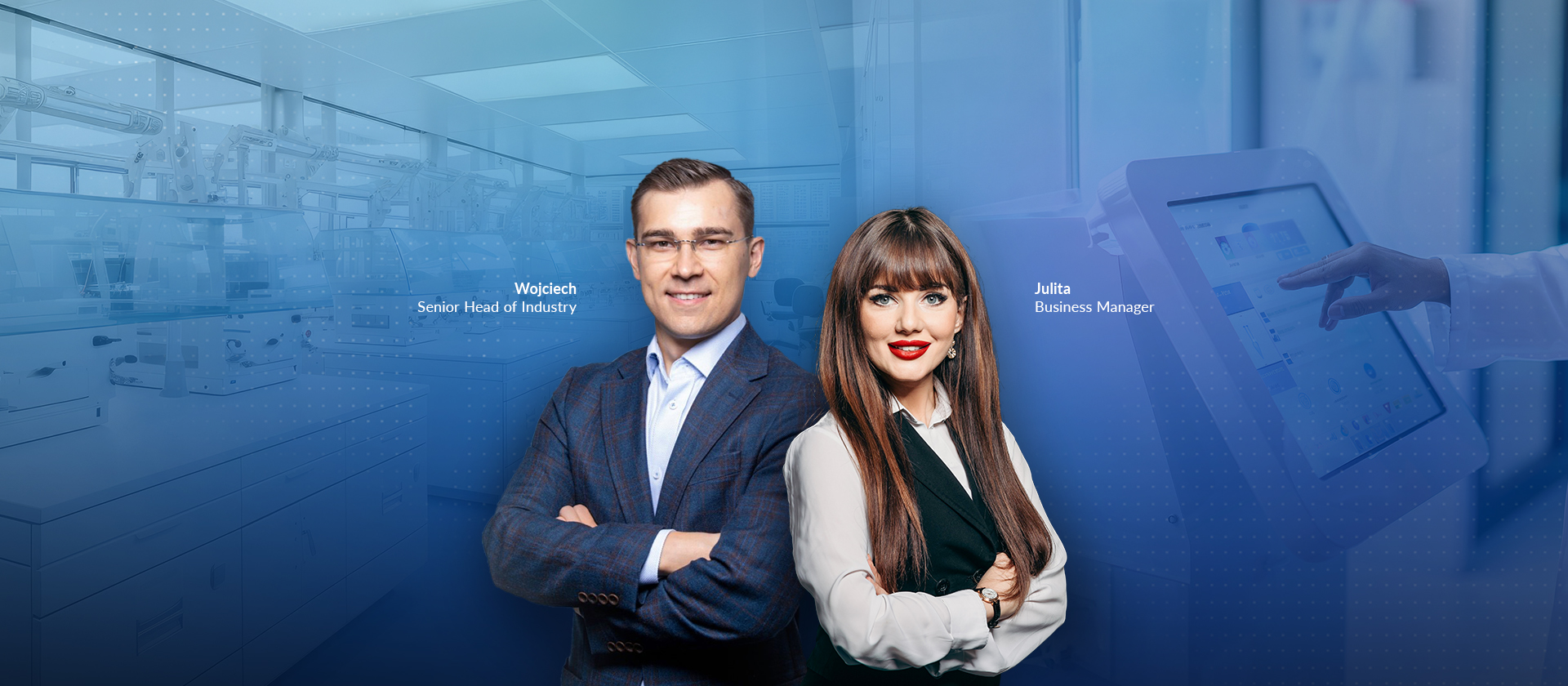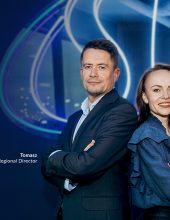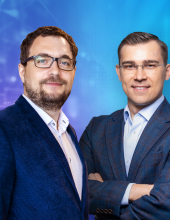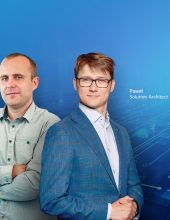Digital Health and Care and Regulatory Affairs. Learn how to effectively connect health and business for the benefit of patients
Digital Health and Care are tools and services that use information and communications technology (ICT) to provide better quality and more effective health services. It includes solutions for prevention, diagnosis and treatment, as well as monitoring and managing health problems and lifestyle habits. From the patient’s perspective, the tool improves healthcare access and quality. From the standpoint of healthcare operators, it helps optimize the organization of service delivery and increases the efficiency of operations and spending. Find out why you should take advantage of Regulatory Affairs’ support in developing digital solutions and learn about the specifics of projects in this area.
Why building digital solutions in healthcare requires a comprehensive approach?
Digital Health and Care is a vast concept. It encompasses IT systems, the application of artificial intelligence (including traditional machine learning and artificial neural networks), and medical devices (including software and applications). It also involves the entire infrastructure enabling all of these projects – data and system security, cybersecurity, or access to computing memory.
New technologies also require a new approach to Regulatory Affairs. Innovations are slipping out of defined product categories because the law often can’t keep up with them.
— The introduction of Digital Health and Care solutions requires the involvement of multidisciplinary teams with broad knowledge. Such teams manage projects in complex, dynamic systems. They operate in an environment of uncertainty with many unknowns — comments for Sii Polska Malgorzata Suska, a consultant in the Healthcare industry.
Regulatory Affairs support generally includes:
- preparation of technical documentation for a medical device,
- support in the certification process,
- preparation of clinical evaluation of the device,
- advice on the classification of medical devices and their registration,
- preparation of package labeling and instructions for use,
- preparation of marketing materials.
Regulatory Affairs also supports the design and adaptation of new technologies to business assumptions. Several decisions must be made at the early stage of innovation to determine the project’s business success.
Software vs. medical device
Medical devices are a very diverse group of products. According to regulations introduced by Regulation (EU) 2017/745 of the European Parliament and of the Council on medical devices (the “MDR Regulation”), they also include software.
This can range from a computer program for diagnostic imaging (e.g. MRI, CT) to a phone app. There is no doubt that not only software supporting a medical device (e.g. monitoring the body’s oxygenation level based on data sent by a pulse-oximeter – such pilot monitoring during the Covid-19 pandemic in Poland saved the lives of more than 6 000 patients) but also the software itself as such can be considered a medical device.
The software will be a medical device if the manufacturer has considered its use for one or more medical applications specified in the MDR Regulation. These will include, in particular, the prevention, monitoring, prediction, prognosis, treatment, or mitigation of disease and the diagnosis, monitoring, treatment, mitigation, or compensation of injury or disability.
Is any software used in health care a medical device?
We divide medical devices into Classes I, IIa, IIb, and III based on the manufacturer’s intended use and associated risks. We classify software that controls the device or affects its use in the same class as the device. If the software is independent of other products, we will classify it separately.
The factor distinguishing software for medical purposes from general-purpose software is the manufacturer’s criterion of intended use. If the software is intended for use in humans to diagnose, monitor, prevent, treat, or alleviate diseases, then the regulations for medical devices apply to the product.
When a manufacturer develops a system for making and handling online consultations, a program for managing doctors’ schedules, or a system to support registering patients at a clinic, we will not be dealing with a medical device. Software must fulfill a specific medical purpose to be considered a medical device. Therefore, software used in a medical environment, such as collecting and transmitting data, will not be regarded as a medical device.
— If the software prompts the doctors with the name of a cheaper equivalent of the drug they intend to prescribe to the patient or the contraindications contained in the leaflet, we will not be talking about a medical device — points out Małgorzata Suska. — But if we create software that analyzes drug interactions, prevents complications related to polypragmasy, or supports drug review with algorithms to support medical decisions, such software will be considered a medical device, even though it has no direct effect on the human body — she explains.
Public system or commercial activity
The issue of software classification has tangible financial implications related to certification. More and more countries are also choosing to reimburse digital medical devices. A good example of this type of regulation is Germany, where applications for Class I and IIa medical devices have been reimbursed since 2019.
Piloting similar solutions is not excluded in Poland, either. As early as 2025, the title “Certified Application of the Ministry of Health” will be able to obtain a health app qualified as a medical device that performs diagnostic or therapeutic processes. It will then go into the Portfolio of Health Applications (PAZ). This is likely the first step in introducing reimbursement for such solutions.
Interestingly, from a business point of view, the Ministry of Health has provided one exception—medical device status will not be required for well-being applications that do not implement diagnostic or therapeutic processes. This means a lower barrier to entry and a faster solution development process.
— Preparation and market launch of medical devices require strict adherence to ISO and IEC norms. This ensures not only the high quality and safety of products but also their compliance with international standards. Following these standards is vital to ensuring that our solutions meet the requirements of both patients and medical professionals — emphasizes Marcin Lis, Compliance and Medical Software Validation Specialist at Sii Poland.
New dimension of Regulatory Affairs
— Consulting in product registration and marketing is not the only dimension of regulatory support today. A team of experts can also effectively optimize Regulatory Affairs tasks and internal processes — emphasizes Malgorzata Suska.
Algorithms can increase efficiency and reduce costs, particularly for any repetitive activities carried out by manufacturers and distributors, such as:
- monitoring and analyzing legal changes and scientific publications,
- post-registration changes in documentation and preparation of updates,
- data collection and analysis processes related to medical device safety and pharmacovigilance,
- collection and analysis of data related to the labeling of medicinal products (alerts from the EMVS system) and medical devices.
Projects implemented in the Regulatory Affairs area
— An example of a project in this area involves implementing a solution that enables remote analysis of specific patient respiratory parameters — says Małgorzata Suska.
The project required primarily:
- carrying out the analyses and tests stipulated for medical devices,
- proper classification and qualification of medical device,
- ensuring compliance with ISO and IEC standards.
As part of the implementation, specialized patient measurement tools were developed that enabled accurate tracking of respiratory parameters. Next, the team created advanced communication protocols that allowed seamless data transfer from measuring devices to the system. The next step was to create an intuitive application that allowed patients to communicate with the system and doctors.
One of the key elements of the project was creating a solution based on AI algorithms to analyze the collected data. These algorithms not only analyzed the data but also ensured its security and proper processing. Expert consultations and tests were conducted with patients and medical professionals to ensure that the developed solution was effective and safe.
— The critical value of Digital Health and Care projects is to help companies navigate the complex realities of development and compliance. By effectively integrating ICT technology with medical processes, we can offer innovative solutions that reach the market with the highest standards of safety and quality while contributing to improving the quality of life for patients — concludes Wojciech Drescher, Head of Healthcare at Sii Poland.
Discover Sii Poland’s services for the healthcare sector and see how we can support your company. Contact our experts to discuss Regulatory Affairs support and learn more.











